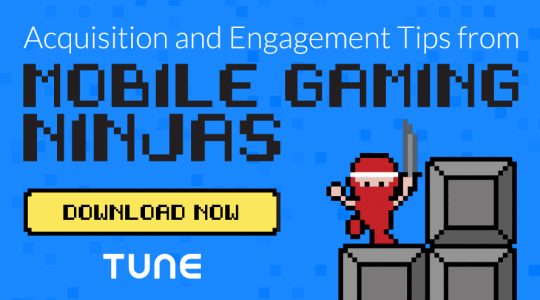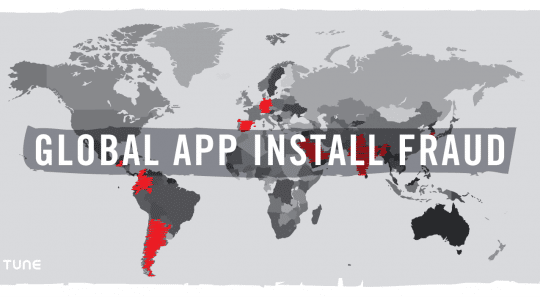A marketer’s worst enemy is implementing tactics that can’t be measured or tested. Screenshots epitomize this – there is no way to A/B test them in the app store. This means that when marketers add screenshots they are making big decisions, without any hard data to back them up, that impact their app store optimization.
The fact that screenshots play such a large role in grabbing users’ attention when searching in the app store only adds insult to injury. We recently conducted a study and found that 93% of the 514 people we asked said they look at and consider screenshots when searching for apps in the app store. The rest of our data sheds some light on the deep, dark, informationless hole created by screenshots. We analyzed all the information, and turned it into actionable tips to create great screenshots.
Hey MobileDevHQ, How’d You Get Your Data?
To conduct this study, we surveyed 514 random participants, and asked them a series of questions. The first thing we asked was whether or not they look at and consider screenshots when downloading an app. If they answered ‘yes,’ we then asked them to label the following features as either ‘very important,’ ‘somewhat important,’ ‘somewhat unimportant,’ or ‘not important.’ The features we asked them about were: contrasting colors, high quality photos, explainer text, features, user interface, consistency with the brand, and design consistency. We then took the top 5 characteristics with the most ‘very important’ votes to highlight in this post.
With our sample size, we can say with 95% confidence that our results accurately represent the true population, with a margin-of-error of 4%.
Now let’s get to the good stuff! Here are some data-backed tips to help you create awesome screenshots!
Tip 1: Don’t Skimp on Image Quality
What does this mean?
This is as simple as it sounds. In fact it might be too simple, and can therefore be overlooked. Make sure when you create your screenshots, you use the highest quality image. Get on Photoshop and touch it up to make it extremely clear and easy to see.
The data – 54% of people think this is ‘very important’
Of the 480 participants who said they look at screenshots when searching for apps, 54% said that high quality images are ‘very important’ in their decision making process. This was the highest rated characteristic by 10%. It’s a small detail, but it’s also important.

Best practices
 There are a few things you can do to make sure you have the highest quality photos. First, as we mentioned above, touch them up in Photoshop. Make sure they are extremely clear and the colors pop. Also, make sure there isn’t too much going on in the picture. You want users to quickly infer what’s going on in the picture. Here’s a great shot from Groupon. The colors pop, it’s high quality, and you can clearly make out everything in the picture.
There are a few things you can do to make sure you have the highest quality photos. First, as we mentioned above, touch them up in Photoshop. Make sure they are extremely clear and the colors pop. Also, make sure there isn’t too much going on in the picture. You want users to quickly infer what’s going on in the picture. Here’s a great shot from Groupon. The colors pop, it’s high quality, and you can clearly make out everything in the picture.
Tip 2: Don’t Waste Space, Include Your Popular Features
What does this mean?
You want your screenshots to show users what your app can do. Don’t waste the space with pictures that don’t show anything important about your app, like this one from the Fantasy Football Hub. These are actually the only two screenshots they have. Not only are they the same image, but they are poor quality, and don’t actually show what the app does. They highlight a number of cool features in their description, but don’t show any in the screenshots. Tisk tisk.

The data – 44% of people think this is ‘very important’
This characteristic had the second most ‘very important’ votes, with 44% of users placing it under this category. However, if we add the people who also categorized it as ‘somewhat important’, there are 354 votes. This means that over 73% of users think showing your app’s features is important.
Best practices
Pick out your most popular features to use in screenshots. You probably have some data to determine which aspects of your app are being used the most, but if you need further inspiration check out your reviews. Pull out common themes from 5 star reviews and consider including those features in your screenshots. If we look at the Target app, we can see that people like the coupons and the shopping list feature. HINT HINT

Tip 3: Give Users a Sense of What it’s Actually Like to Use Your App
What does this mean?
 You want your screenshots to give the user a sense of what it’s like to use your app before they download it. This relates to the previous tip about making sure to show your popular features. But beyond that, you want potential users to actually see what it’s like to interact with your app. This Kayak screenshot is great. I can see where I enter my destinations, how I can filter search results, and what my results look like. I don’t know about you, but I’m ready to download this app and book a trip to Hawaii right about now.
You want your screenshots to give the user a sense of what it’s like to use your app before they download it. This relates to the previous tip about making sure to show your popular features. But beyond that, you want potential users to actually see what it’s like to interact with your app. This Kayak screenshot is great. I can see where I enter my destinations, how I can filter search results, and what my results look like. I don’t know about you, but I’m ready to download this app and book a trip to Hawaii right about now.
The data – 42% of people think this is ‘very important’
This characteristic actually had the second highest number of votes for both ‘very’ and ‘somewhat’ important, with 75% of people labeling it as one or the other. However, only 42% of people thought it was ‘very important’ – slightly lower than the number of people who wanted to see popular features.

Best practices
Try showing pictures of what it looks like to use an app in the middle or towards the end of a task. It would have been easy for Kayak to just show what it looks like to input your destination. This would fit the criteria of showing your features by giving the user a good sense of what the app can do, but it would not show what it’s like to actually use app. By including the completed action of actually searching for a flight, users can see a bigger picture and really grasp the apps capabilities.
Tip 4: Seal the Deal With Explainer Text
What does this mean?
Explainer text can help users understand exactly what you are trying to show in your screenshot. It can also be used to highlight specific use cases. For example, Evernote states that you can ‘Mark up images and PDFs, then share them with friends and colleagues.’ Without the text, it just looks like a doodling tool. But with it, the user can envision a social or professional use case.

The data – 38% of people think this is ‘very important’
Only 38% of people rated this feature as ‘very important.’ However, 67% of people categorized it as either ‘very important’ or ‘somewhat important.’ If done right, adding explainer text can never hurt you, but it is more helpful in certain instances. For example, it is especially useful for games, where it is hard to show interactive gameplay in a still picture.
Best practices
Keep your text short. If you need to write a book explaining the feature, you probably shouldn’t bother including it. However, if you can quickly explain a specific use case or highlight a certain aspect of a feature, you should consider doing it. Also, make sure it is easy to read. Putting the text over a solid background can help with this.
Tip 5: Stay Focused, Stay Consistent
What does this mean?
Keep your design consistent within your screenshots. This mainly applies to instances where you add extra elements to your screenshots such as explainer text.
The data – 31% of people think this is ‘very important’
This category had a fairly even split between ‘very important’ and ‘somewhat important’ labels. 31% of people said it was ‘very important,’ and 35% said it was ‘somewhat important.’ Although more people thought it was only ‘somewhat important,’ the majority of people, 66%, assigned some level of importance to consistency.

Best practices
This tip is very important to remember when adding extra elements to your picture like text. If you have explainer text in one picture, you should consider having it in all the pictures because users will be looking for and expecting it. Also make sure to keep the same font style and size throughout all your pictures.
When Life Hands You Lemons, Make Lemonade
The ability to test and apply quantifiable data to your screenshots is still extremely limited. Hopefully in the future, marketers will be able to A/B test for apps like they can for their websites. Until that day, we hope this data can help you with this part of the ASO journey.
If you’re interested in trying out our tools, you can sign up for a free account here. As always, if you have any questions feel free to reach out via Twitter at @MobileDevHQ or via email at [email protected].
Author
Becky is the Senior Content Marketing Manager at TUNE. Before TUNE, she handled content strategy and marketing communications at several tech startups in the Bay Area. Becky received her bachelor's degree in English from Wake Forest University. After a decade in San Francisco and Seattle, she has returned home to Charleston, SC, where you can find her strolling through Hampton Park with her pup and enjoying the simple things in life.




Leave a Reply
You must be logged in to post a comment.